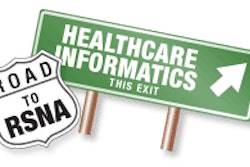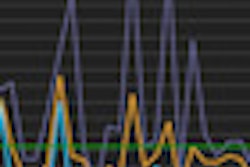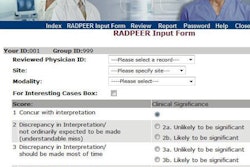CHICAGO - Semantic Web technology tools can be used to provide radiologists with decision support during image interpretation, according to research presented on Thursday at the 2012 RSNA annual meeting.
Access to such a semantic Web tool was able to improve diagnostic accuracy and diagnostic confidence, while decreasing interpretation time for the majority of residents participating in an evaluation of the tool.
"Our semantic wiki framework provides an online, world-accessible -- including in the PACS -- resource for radiology, providing them with pertinent information about disease, but also decision support for the cases they're currently interpreting," said presenter Mina Ghaly, a fourth-year medical student at Dartmouth Medical School.
Radiologists face a number of challenges, including increased demand for imaging. Emergency department use of CT increased from 2.7 million studies in 1995 to 16.2 million in 2007, an annual increase of 16.2% with no signs of tapering, he said. Ghaly teamed with Dr. Daniel Rubin from Stanford University on the study.
In addition, interpretation of imaging studies is prone to variability that is not explained by variations in patients alone. These variations have also been shown to affect accuracy and recommendations of radiologists, leading to suboptimal quality of care, he said.
"Part of the reason that variation exists is nonstandardized use of terminology currently in radiology," he said.
Furthermore, radiologists lack immediate access to knowledge sources. "As the medical practice becomes busier and the time for reading decreases, the need to access knowledge right away at your fingertips becomes greater," Ghaly said.
Ideally, radiologists would want to work in an environment with seamless integration between the PACS workstation, healthcare enterprise, and knowledge sources. To address this, the researchers developed and evaluated a system that employed semantic Web technology to provide real-time access to knowledge for radiologists, while also providing them with decision support for current cases.
Wikis allow users to easily modify and view data, while semantic wikis adds specific semantic tags to the Web pages to enable computers to process the content stored on them. These semantic wikis show great promise for helping users manage, access, and integrate knowledge, he said.
Liver pathology
The researchers focused their initial efforts on a building a database of liver pathology information, making use of online resources and textbooks. For each disease, they encoded the frequently observed radiological features in that disease in three qualitative categories (common, less common, and rare) that were assigned numerical values.
They also encoded any clinical context associated or not associated with liver pathology and assigned numerical values based on their association or lack of association. The decision-support system can be queried based on a single clinical case, and it will provide accurate differential diagnosis and give a confidence rating for each value, Ghaly said.
To evaluate the system, the researchers recruited eight residents from various training categories at Stanford Medical Center and Dartmouth-Hitchcock Medical Center. Twenty clinical cases were presented in random order; half of the cases had assistance from the decision-support system while the other half did not.
The readers were asked to record their differential diagnosis for each case and their confidence in the entire differential list (totaling up to 100%). Interpretation times were also recorded.
In those cases that received assistance from the decision-support system, the residents were shown the system-generated differential diagnosis list based on the observed radiological and clinical findings, as well as its confidence in each diagnosis.
Improved accuracy, confidence
The percentage of first-ranked diagnoses for each reader that were correct was 91.3% with help from the decision-support system, compared with 72.5% without help. The correct diagnosis was listed in the top three decision-support choices in 100% of cases with decision support, compared with only 82.5% without. The differences were statistically significant, Ghaly said.
Mean reader diagnostic confidence also increased from 58.7% to 80.2% with use of the decision-support system. That difference was also statistically significant.
As for speed of interpretation, five of eight readers performed faster with an average of 29.2% decrease in reading time.
The semantic wiki framework can help meet some of the challenges faced by radiologists and may contribute to an increase in accuracy, he said.
"It would be a great additional tool for residents in training or in private practice where there's such a high demand for reading cases that you want something there to support you in your reading," Ghaly said.
In future directions, the researchers plan to create methods to parse existing radiological texts to automatically populate the semantic wiki resource with information about diseases and their features. They also would like to create an educational tool that scans the differential diagnosis list to prompt residents on potential findings they might not be seeing, he said.
In addition, the researchers hope to provide full integration into the PACS workstation and extend the algorithm into the electronic medical record (EMR) system. Residents' notes can then be scanned to generate a potential differential diagnosis list to assist them in ordering appropriate imaging tests and reduce unnecessary cost, he said.



















